Elon Musk is a visionary technologist.
His projects involve space travel, literally shooting for the moon and Mars—energy and transportation. His companies have propelled him to a net worth of over 20 billion. But how have government policies and taxpayer money boosted his businesses?
His major companies have all had significant government support in one form or another. Let’s start with Tesla.
In recent years, Tesla has inched north of 2 billion in federal and state subsidies.
The company posted its first profitable quarter in two years, thanks to the popularity of the Model 3 sedan. The automaker said it generated $6.8 billion in revenue in the third quarter of 2018 and walked away with $311 million in profit — the most the company has ever made in a quarter.
“Q3 2018 was a truly historic quarter for Tesla,” CEO Elon Musk and CFO Deepak Ahuja wrote in a letter to investors. “Model 3 is attracting customers of both premium and non-premium brands, making it a truly mainstream product.”
The state gave Tesla nearly 1.3 billion in tax breaks in Nevada to build their first Gigafactory in 2014. Tesla will be sales tax-free for 20 years, exempt from property tax for 10 years and will receive millions of other incentives.
That is; if they keep up their end of the bargain by investing billions into the facility and employing thousands of people.
“On the Telsa side in which there includes SolarCity, we have seen some of the biggest deals in Nevada and also in upstate New York in Buffalo,” Greg LeRoy, Executive Director, Good Jobs first.
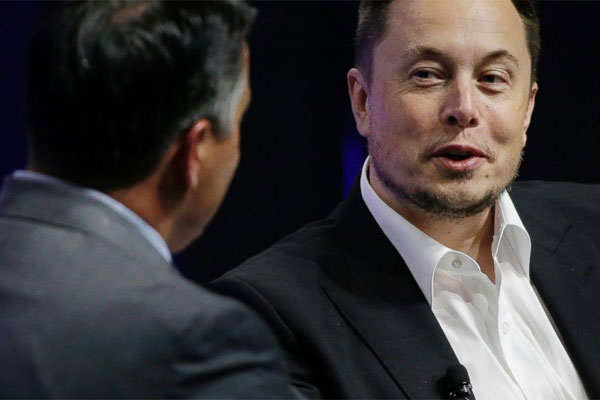
Tesla and SpaceX CEO Elon Musk responds to a question by Nevada Republican Gov. Brian Sandoval during the closing plenary session entitled “Introducing the New Chairs Initiative – Ahead” on the third day of the National Governors Association’s meeting Saturday, July 15, 2017, in Providence, R.I. (AP Photo/Stephan Savoia)
Of course, there are those who are skeptical of all the tax breaks Elon gets.
“I think that another city or local government that is considering getting into this massive tax subsidy game to take a hard look at Reno and asks if the cost is worth the benefits,” Bob Fulkerson, State Director, Progressive leadership alliance of Nevada.
Fulkerson says Nevada infrastructure cannot accommodate Elon Musk’s plan for mass expansion.
“We want Tesla to succeed, I mean we want electric cars and we really want to get off fossil fuels and we want this economic reason to succeed. But this kind of growth is just not sustainable here,” adds Fulkerson.
Remember the $2 billion number, that doesn’t include the federal electric vehicle tax credit that consumers get.
The $75,000 credit has made Tesla electric cars about 1.5 billion dollars cheaper in aggregate for consumers in the U.S. Some states even have extra incentives on top of that. The federal credit is phasing out for Tesla starting 2019.
To be clear, other companies making electric cars benefit from this as well and Tesla isn’t the only company to get direct government subsidies. Billions of dollars of incentives have been given out in states across the country to attract economic development.
“Not a new problem and we’ve never had any federal leadership trying to stop the race to the bottom,” says Greg LeRoy.
Tesla’s competitors: GM, Ford, and Chrysler all received more than a billion dollars in subsidies in the state of Michigan, according to a New York Times investigation. Of course, Tesla sells fewer cars and has far fewer employees.
Also, federal fuel economy standards have helped Tesla’s bottom line.
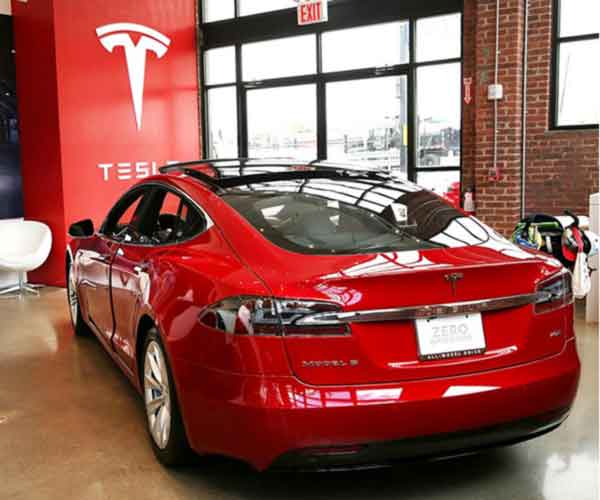
A Tesla model S sits parked in a new Tesla showroom and service center in Red Hook, Brooklyn in New York City. /Photo by Spencer Platt/Getty
Automakers that sell gas and cars can buy credits from electric vehicle makers like Tesla to comply with regulations. Tesla is set to make more than $830 million in revenue from 2015 to 2017 selling these credits.
A Tesla spokesperson told CNBC:
“Tesla has succeeded in spite of government subsidies, not because of them. Third-party studies have shown that our biggest competitors, including the oil and gas industry, receive trillions of dollars in subsidies each year [globally]. In comparison, Tesla receives virtually nothing yet still manages to compete with these giants”. “… We would much prefer a level playing field where all companies go to zero incentives”.
While Tesla is helped by some incentives, other government policies have helped the company back. For example, they aren’t allowed to set up shops to sell their products directly to consumers in every U.S. state.
Of course, government subsidies and tax incentives are not necessarily bad by default. If a government decides to invest in an industry for the good of its citizens, it has the power to do so.
Many countries, including the U.S., have been subsidizing clean energy in the face of climate change. That is the crocs of Elon’s mission.
In fact, on the Tesla website, there is even a constantly updated tracker that displays the total CO2 saved by Tesla vehicles.
In 2015 Elon Musk responded directly to an LA Times report saying his company has received almost $5 billion in government support. He called the report misleading and deceptive and defended tax payer’s subsidies.
Government subsidies aren’t the only way Tesla has gotten support from the government. Before Tesla went public in 2010 it received a substantial government loan. Elon Musk took advantage of an entirely new government initiative called – The Advanced Technology Vehicle Manufacturing Loan Program.
Tesla received a $465 million loan and paid it back with interest in 2013, 9 years ahead of schedule. While addressing the American taxpayer, Musk said: “I hope we did you proud.”
Ford and Nissan also got a larger loan from this program along with Fisker automotive which went bankrupt.
Musk’s solar company also benefits from federal policies supporting solar energy. He helped start SolarCity in 2006 and it was bought by Tesla 10 years later. It is now called Tesla Energy.
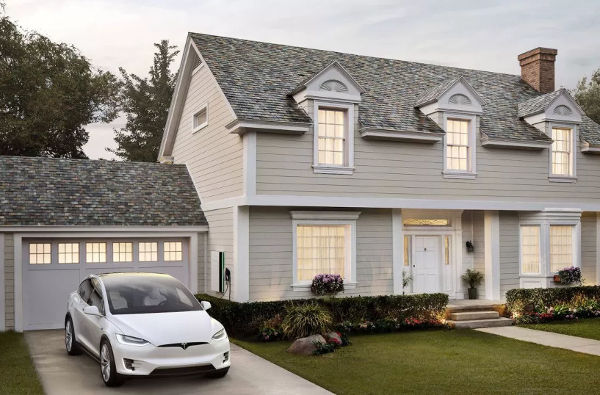
Clean slate. Tesla’s new glass-covered solar roof tiles are designed to look like a traditional roof, doing away with the need for separate solar panels.Credit: Tesla
“Nobody with a brain cell would want to put these two together. SolarCity desperately needed a bailout,” Jim Chanos comments on Tesla/SolarCity deal.
And finally SpaceX, the rocket company receives very little in the way of government subsidies. Instead, that company relies on government contracts from NASA, the military and satellite companies.
Nasa helped SpaceX off the ground by awarding SpaceX with a key $400 million contract in 2006. Since then SpaceX has won over $4 billion in additional awards from NASA launching a much critical mission for the U.S. space agency.
SpaceX has also won over $600 million in military contracts. It has been on the government list of top federal contractors since 2013. While that may sound like a lot of government money these contracts are competitive bids against other airspace companies, like United Launch Alliance and Boeing.
Launching with SpaceX often costs taxpayers half as much as the money competitor requested. Elon Musk has repeatedly tweeted things to NASA recently saying SpaceX would not be where it is today without NASA.
Basing business off government contracts can be a risky strategy. The former PayPal finder Reid Hoffman thinks Musk has made it work.
“I was the second person Elon pitched SpaceX to and I was like, oh, you are going to be doing this thing that comes off national government subsidies and so forth and, oh, it is a disaster. He was right, and I was wrong,” said Reid Hoffman, Former PayPal Founder.
So while Tesla is not alone in going after government dollars to support his business, Elon Musk has certainly gotten some help from taxpayers along his rise to stardom.




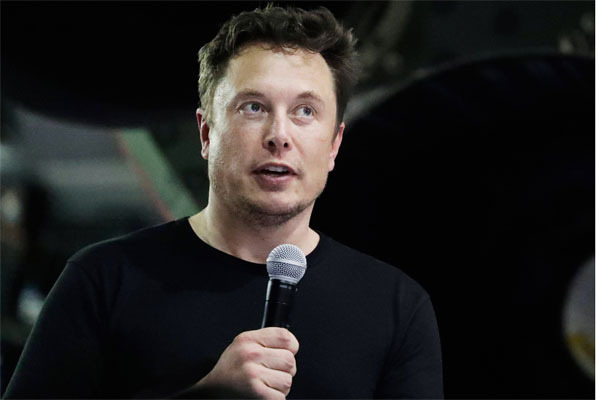






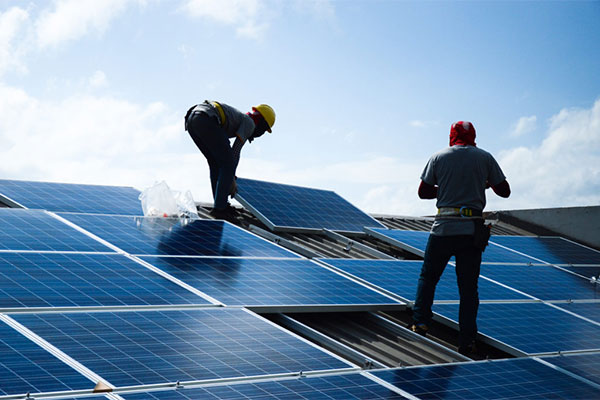




Far better to invest 4.9 billion in Elon Musk and his genius ideas than to waste it on a wall!
While Musk’s companies benefited from government assistance, many many other entrepreneurs and other established corporate players tapped the same sources for clean tech funding and, unlike Tesla, most of these other takers have contributed bubkes to the US economy with this taxpayer largesse. While many can decry anyone getting a subsidy, Musk’s track record demonstrates he is way more of a “maker” than a “taker”